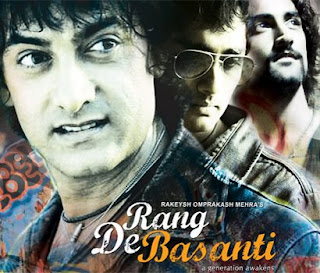While the orthodoxies of Neo-Realistic elements have died out in recent years in Indian cinema, it has given rise to a new technique, a new form, a new element to ensure the participation of the masses.
Have you ever seen on-screen, in a movie, the sight of someone defecating near the railway tracks in the morning, although it is a very common sight?
Realism in cinema refers to the objective portrayal of subjects as they appear in our everyday lives, where the depiction is free of personal interpretations, even if it implies depicting an aesthetically unpleasant sight. Realism is a technique, not a movement or style. It is a device a filmmaker can use to achieve a desired effect. This technique gained prominence in the Italian Neo-Realist films, which were characterized by narratives set in Italian cities, amidst the poor or working class, being filmed on location, using a largely non-professional cast, and post-production dubbing. Cesare Zavattini, a screenwriter who worked with Vittorio De Sica, maintained that the greatest achievement of Neo-Realist cinema was that it brought to screen the daily lives of the ordinary people. As such, before the late 1940’s, when new generic strands of the sentimental comedy, called ‘pink Neo-Realism‘ and melodrama called ‘popular Neo-Realism‘ overtook orthodox Realism at the forefront of the commercial resurgence of the domestic product, the aim, then, of Neo-Realist films had to be to rediscover, without embellishment or dramatization, the dailiness of peoples’ lives. At least that is what films like Umberto D and Ladri di Biciclette by Vittorio De Sica, Roma città aperta and Paisà by Roberto Rossellini, La terra trema and Ossessione by Luchino Visconti aimed to achieve.
In Indian cinema, from its advent, social realism was seeped in melodramatic elements, almost always following narratives containing rural agrarian families affected by migration to the cities, where they are treated to the harsh realities of urban life. At the heart of the early Realist films made in India, lay a firm attachment to the patriarchal society’s feudal roots. The film that introduced the Indian spectator to ‘social realism’ in an Indian context was Dharti ke Laal made by K. A. Abbas in 1946, which focused on the human dimension of the Bengal famine of 1943 and sought to be a part of the nation-building effort on the eve of India’s independence. In an emulation of the model Soviet collective, the documentary viewpoint is apparent, as well as in the representation of the rural masses and their starvation. The film, just like the others of its kind that followed, celebrates peasant solidarity and harmony, placing it in contrast to urban cruelty and ugliness.
Mother India, made in 1957, directed by Mehboob Khan, successfully shows the conflicts of an agrarian society and the role the Indian woman plays in the survival of the family. There are also elements of intense melodrama throughout the film, especially when Radha, the protagonist, played by Nargis, is driven to kill her own son. Again, in 1953, Bimal Roy’s classic Do Bigha Zameen, although fresh in terms of its depiction of the peasants and their fear of the city, it was not free of melodrama: when at the end of the film, Shambhu, the protagonist loses all his land, the underlying implication is that he will now migrate to the city and join the ever-increasing proletariat. Even the great Satyajit Ray could not diverge from the conventional melodramatic depiction of peasant urban migration. In 1955, the same year as Raj Kapoor’s Shree 420, which is another film that concentrates on rural-urban migration, Satyajit Ray’s first film, Pather Panchali, was released. Shot on location, the film ends with the oft-recurring migration of the peasant family to the city.
As India progressed to a new awareness of herself, in the following decades, ‘social realism‘ gave way to romance and action of the 1960s-70s. Realism was lost to grand international locations, ornate sets, Westernized villains, scantily clad actresses. Even the ‘angry young man‘ phenomenon, which aimed to empathize with the working class, made intensive use of fantastic melodramatic techniques of the bereaved mother, the rags-to-riches fairytale, the lost brother, the one-against-the-world story, et al. The nation bought it. Dev Anand, Rajesh Khanna, and Amitabh Bachchan became immortal. But where in all the glitz and glamour, we now know very well of, was the story of the common man lost?
One oft-used argument is: when the entire nation is already hunger-struck, and living below poverty line, who wants to see more agony on-screen? The celluloid is an escape mechanism. Magic becomes real on screen: it is probably the only time people can witness a kid polishing shoes on the streets of Bombay, become one of the most powerful men in the underworld. The screen is probably the only place where a coolie at the docks can defy the system and come out victorious. The screen is probably the only place, where a cook can marry a princess. The screen is the only place where the audience can be in Utopia.
They say, nothing sells like aspiration. It holds absolutely true for Indian cinema. Independently, I would like to add to that. Nothing sells like a scantily clad woman. The wet clinging saree, the waterfall dances, the ‘item numbers’ is something we all are well aware of. When a schoolboy peeks behind bushes to see his teacher changing her clothes in Raj Kapoor’s Mera Naam Joker, the entire country shares his voyeuristic gaze. Combine the elements of fantasy and eroticism, and one finds oneself looking at a superhit. Certain films even through these decades made use of realism, but even in these, the elements of fantasy and eroticism were far more overbearing than realism. One English language film made in 1992 revisited Indian Realism. This film was called City of Joy, directed by Roland Joffé. This film, remaining true to the never-questioned conventions of Indian realism, also told the story of a migration worker who gets a job as a rickshaw-puller in Calcutta. Majority of the film is shot on location, in the slums of Calcutta.
In the 21st century, Realism in Indian cinema borders around creating a mass involvement of sorts. This kind of realism, although sometimes using elements of fantasy, aims to address the collective psyche of the people. There are always the predominant elements of fantasy, melodrama, and romance. However, there is also a new element that has surfaced in the last decade: a sense of duty towards our country. Be it complimentary to the new nation-building efforts that the youth today is involved in, be it the economic boom and a new-found pride – for whatever reason, these films aim to involve the masses, generally the youth, to be not just the catalysts in the process of change, but the change itself. For example, films like Yuva, Rang De Basanti, Lage Raho Munnabhai, Halla Bol, all echo the same message. If there is something wrong out there, don’t wait for someone else to do something about it, but please do it yourself. Of the four films mentioned above, two were massive blockbusters. The message in Yuva is clear: join the system to change it. RDB was a bit was radical, but the message was the same. Lage Raho Munnabhai expressed a revered philosophy, that we seem to have forgotten, and it’s implications in the 21st century. Halla Bol took a real case that happened in Mumbai last year, and created a narrative around it, once again focusing on a mass insurgence to achieve an end.
The individual stories of these films are irrelevant; what is important is the fact that all these films (and there are many more of the sort) take their inspiration from ‘real life’ situations and construct a tale around it, in the hope of getting the people to come out of their comfort zones. There is realism in the film because the ‘hero’ does not fight back when he is getting beaten up at the beach in Halla Bol as opposed to him continuing to fight villains despite numerous bullet wounds (Sholay). The realism in these films lies in the reality of the events they are inspired by. The realism lies in the reality of the thought they create. RDB inspired candle light marches in Delhi. Lage Raho Munnabhai sold millions of “Get Well Soon” cards all around the country. This phenomenon is not just limited to films. Look at the advertisements around us. For example, the television advertisement of a Hindi newspaper called Dainik Bhaskar shows Dhoni urging the spectator to “Zidd karo, duniya badlo” (Make demands, change the world).
While the orthodoxies of Neo-Realistic elements have died out in recent years in Indian cinema, it has given rise to a new technique, a new form, a new element to ensure the participation of the masses.
And they seem to have got it right: this is youngistaan, meri jaan!




